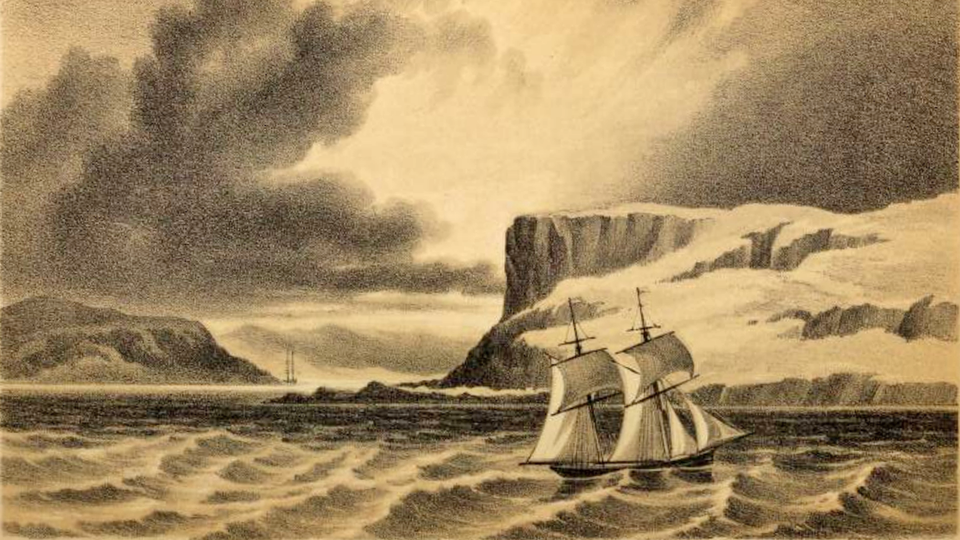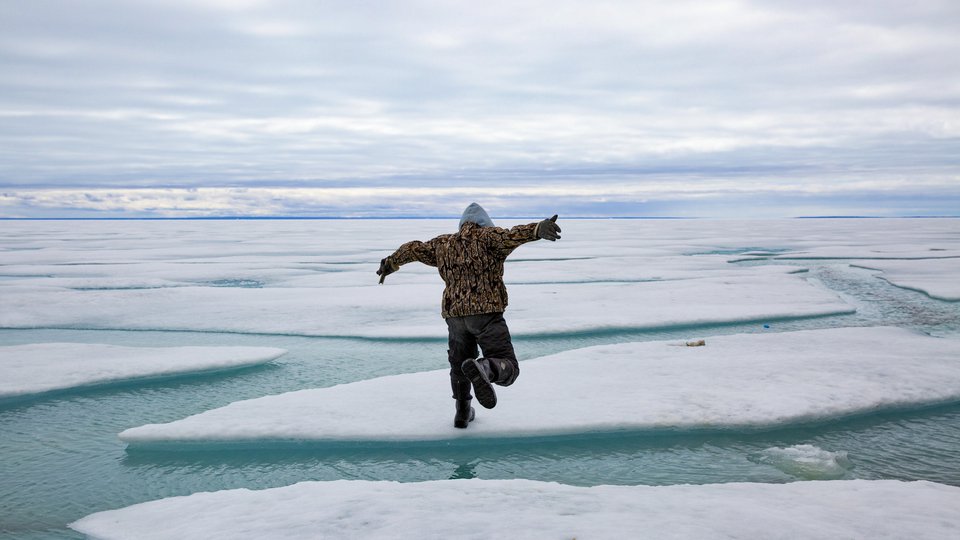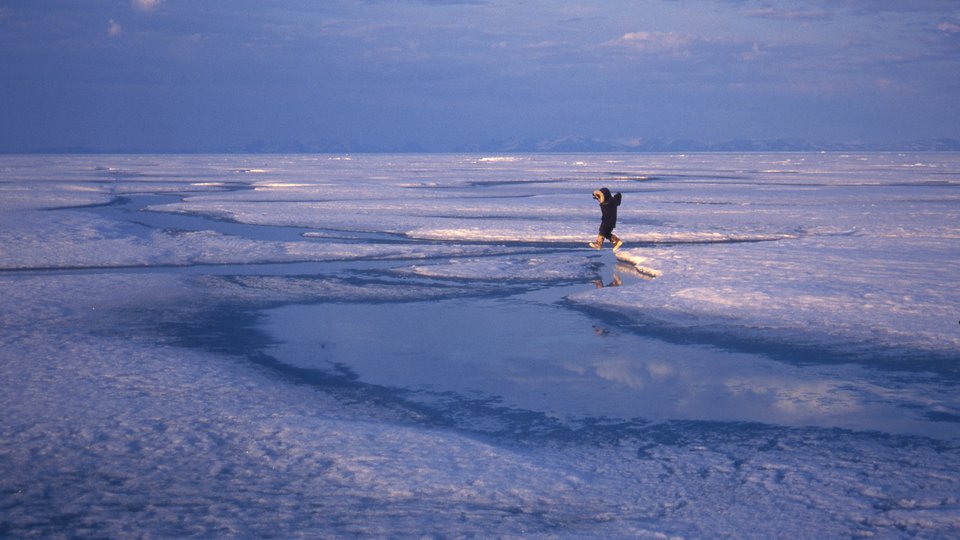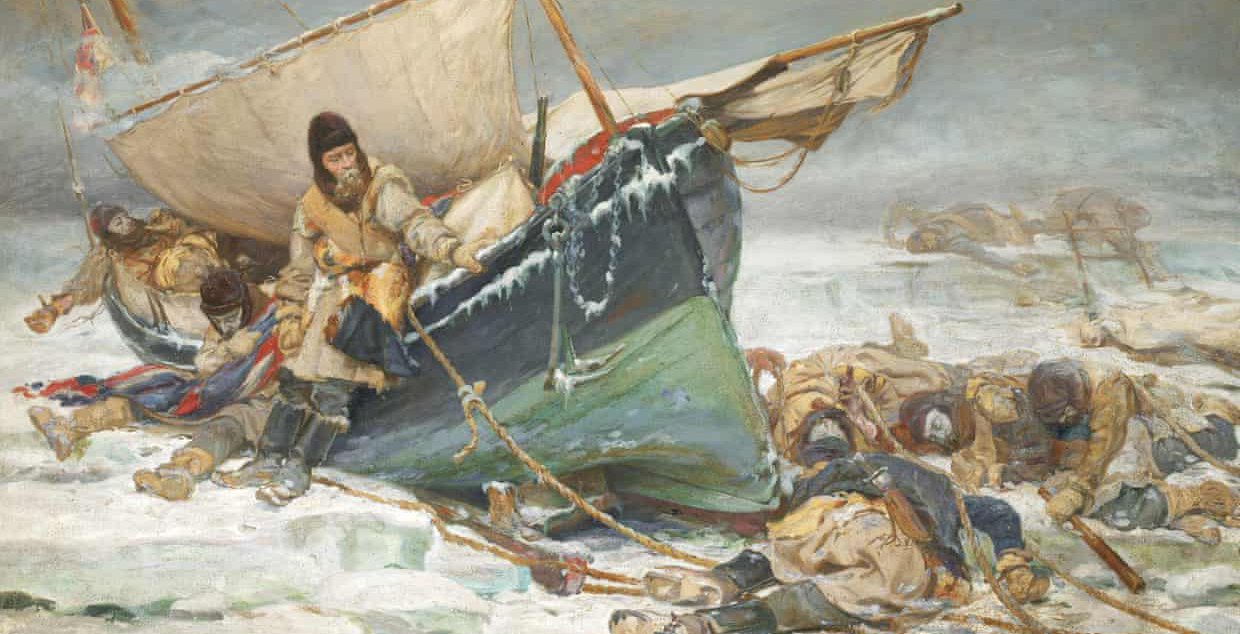
Ice Ghosts: The Epic Hunt for the Lost Franklin Expedition by Pulitzer Prize winner Paul Watson tells the story of how a combination of marine science and Inuit knowledge helped solve the mystery of the doomed Franklin expedition of 1845. In this passage, Watson writes about Louie Kamookak, an Inuit oral historian who played a vital role in the discovery of the HMS Erebus in 2014.
ouie Kamookak’s catalogue of Inuit oral history was growing steadily thicker, but he wasn’t filling most of his notebooks with detective work on the Franklin mystery. Trying to find Sir John’s remains had become a sideline. The Inuk historian’s primary mission was to preserve as much of his people’s traditional knowledge as one man’s life, the Arctic, and her spirits allowed. Arctic geography had become a tangled knot of names that was making it difficult, at times impossible, for Inuit and qalunaaq to understand one another’s history and learn from each other. The first thing foreign explorers did when they came to the archipelago was rename the places they saw to honor themselves, their backers, or some dignitary in line to be enshrined on a map. Those toponyms gradually obliterated the names Inuit had used for centuries to identify places important to them for completely different reasons. By the early 1980s, official bulldozing of Inuit geog- raphy and its crucial links to ancestors and oral history was virtually complete. Kamookak was determined to rebuild at least a solid foun- dation from the linguistic rubble. Traveling around Netsilingmiut lands, he spent hours sitting with elders, listening to the original names of places and the Inuit legends behind them, and writing it all down in his notebooks.
Understanding the why behind an old name was critical to seeing history more clearly, including answers Kamookak still sought to the riddles of the Franklin Expedition. European explorers ignoring indigenous geographical names and creating their own was all about ego, honor, and power, and some sense that having someone speak your name while pointing to an island or a strait was the closest one could get to everlasting life on Earth. In the relentless drive for discovery, the planet seemed to be their plaything. Inuit saw their world differently. In those days, they didn’t name any part of the land or sea after people, not even to memorialize a revered shaman or some other powerful figure. Naming landmarks was more utilitarian, usually based on descriptions that could help people find their way around, which was essential to their survival. That changed when Inuit settled and began to copy the qalunaaq. They started having competitions to name hamlet government offices, schools, and streets after Inuit, hoping to assert their own identity with as much pride as Europeans had had in trampling it.
“The feedback we started getting from the elders was they didn’t really like that,” Kamookak told me. “They didn’t like places named after someone deceased or after any person—even if it was a building.”
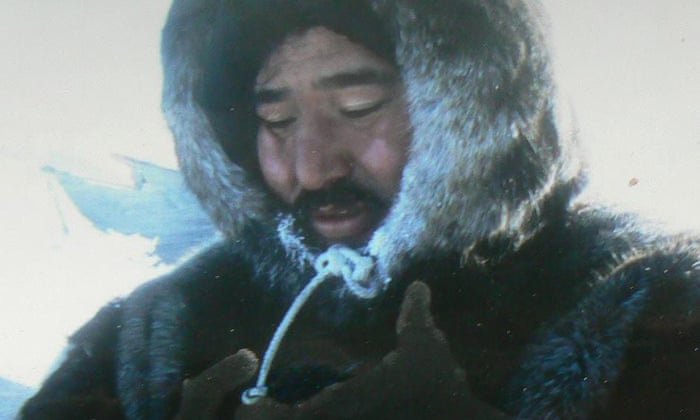
Louie Kamookak. Photograph: Facebook
He didn’t question their doubts, but he suspects they had a superstitious fear. The spirits still commanded their respect. It was unwise to tempt their wrath. Kamookak knew that if he didn’t learn and record the old names, most would die out with the elders who knew them best. Others in his generation, and younger people coming up, didn’t seem to care. Louie’s wife, Josephine, joined the cause, and together they gathered around four hundred local names. Interest grew in reviving many that foreign explorers had overwritten by fiat.
Inuit not only have a more practical view of naming places, they also like to have fun with it when they can. Since they were also less puritanical about human sex and the requisite body parts before Christian missionaries arrived, asking for directions can get a bit risqué. A small island with no English name, which sits in the Sherman Basin near the mouth of the Kaleet River, has two distinctive hills. So Inuit call it Igruq, which means “two testicles.” Other toponyms were more significant to history and the way Europeans rewrote it. Norwegian explorer Roald Amundsen, the first European to transit the Northwest Passage early in the twentieth century, mapped The Royal Geographical Society Islands and named them after one of his expedition’s sponsors. Inuit already knew them as Hiurarjuaq, which means “the big sand.” Montreal Island, where relics and Inuit stories suggest some of the last survivors among Franklin’s men spent their final hours at the mouth of the Great Fish River, was Qaiqturaarjuit. That describes the place precisely, not for one tragedy but for the way the land has always looked to travelers. It means “many little bedrock outcrops.”
When he chatted with elders about names and places, Kamookak also asked if they knew any stories about early qalunaaq visitors. They had many to tell, but a key detail was always missing: Inuit didn’t know the foreigners’ names. There was no Inuit calendar to pin down years or dates. Since the nicknames that elders passed down in their stories were either descriptive, or approximations of what Inuit heard in the original encounters long ago, it was hard to be sure who they were talking about. Kamookak kept digging. On his trips to the top of King William Island, he often found tantalizing clues. Sometimes they were lying in plain sight in abandoned camps. In Terror Bay, about midway up the island’s west coast, Kamookak found a piece of wood and some old rope in a circle of stones, which was an old Inuit tent ring. The wood and rope were obviously foreign. The historian’s gut told him they were Franklin relics, which teased him deeper into the search.
A recently updated paperback edition of Ice Ghosts: The Epic Hunt for the Lost Franklin Expedition will be published on November 6, 2018 and is now available for pre-order.
